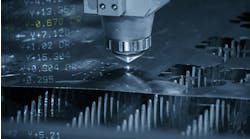The landscape for the manufacturing sector of the U.S. economy is transforming, driven by the escalating reliance on data for decision-making. Data-rich environments are now the norm, enabling manufacturers to glean insights, refine processes, and boost efficiency. Enhanced productivity and competitiveness have become direct outcomes of this data-centric approach, reshaping the industry's operational dynamics.
Delving into the advanced integration of operational technology (OT) and information technology (IT) marks a significant shift in manufacturing paradigms. The integration's role is crucial, enabling seamless data flows and sophisticated analytics. Smarter, more agile manufacturing operations result from this fusion, setting new standards for industrial efficiency.
The evolution of OT and IT: A historical context
Traditionally, OT and IT in manufacturing have occupied distinct realms: OT handled physical devices and processes, while IT managed data systems. However, these distinct roles began overlapping, driven by the need for efficiency and data-driven insights. The evolution from segregated functions toward integrated systems marked the onset of a new industrial era.
See also: ‘Operational’ twins should rise in their use in 2024
Integrating OT and IT initially faced hurdles, including technological incompatibilities and cultural differences. Real-time data analysis, improved process control, and unified operational views became the compelling forces behind this integration. Manufacturers recognized the need to restructure their approach to technology, setting the stage for more cohesive operations.
Some advanced integration strategies
Innovative methods are revolutionizing the integration of OT and IT, creating new paradigms in manufacturing. Such integration not only improves operational efficiency but also paves the way for agile manufacturing processes, reflecting a significant advancement in industrial technology.
Deploying interoperable systems bridges the gap between factory operations and enterprise IT, enabling more efficient data handling and analytics. Data access control plays a central role in ensuring secure and efficient data exchange between systems. Establishing the control mechanisms is one part of the strategy for achieving deeper convergence between OT and IT systems.
The transformation towards cloud-based infrastructures is a notable trend, with a significant 77% of manufacturers integrating cloud solutions into their operations. This shift is motivated by the cloud’s capability to scale, its flexibility, and its robust data management features. It exemplifies the industry’s movement towards more efficient, accessible, and data-centric manufacturing practices.
Achieving deeper convergence between OT and IT requires more than just basic integration; it demands a strategic approach involving advanced analytics and machine learning. Integrating Internet of Things (IoT) technologies furthers this aim, fostering a manufacturing environment that is not only interconnected but also intelligent. The result is a proactive, predictive, and highly responsive manufacturing process.
Leveraging next-generation technologies
A remarkable 96% of manufacturing companies are now embracing at least one next-generation technology. This widespread adoption reflects the technologies’ critical roles in enhancing manufacturing processes. Innovations in this sphere are crucial for maintaining competitiveness in an industry marked by rapid technological evolution.
See also: Technology solutions for energy monitoring on the plant floor
Artificial intelligence (AI) and IoT are at the forefront of next-generation technologies transforming manufacturing. AI is redefining the capabilities of predictive analytics and automation, while IoT is bridging disparate systems and devices. Together, they are creating a new landscape where enhanced operational efficiency and product quality are not just goals but achievable realities.
The use of AI and IoT is integral to enhancing OT-IT integration in manufacturing. Their application leads to sophisticated data analysis, real-time monitoring, and automated decision-making, aligning perfectly with the industry's shift towards Industry 4.0. Such tools are essential components in the modern manufacturing ecosystem, driving efficiency and innovation.
Achieving a deeper level of IT-OT convergence
Only 23% of manufacturing firms have progressed beyond basic IT and OT convergence levels, revealing a significant scope for further integration. Those at the forefront of this deeper integration are reaping benefits in operational efficiency and data utilization. Advanced convergence is a quantum leap in how manufacturing data is harnessed and operational decisions are made.
Barriers such as technological compatibility issues, organizational resistance, and strategic ambiguities impede advanced convergence. To surmount these obstacles, manufacturers must adopt an integrated approach, updating technological infrastructure and reshaping organizational culture. Clear, strategic planning is imperative, ensuring that the transition to advanced IT and OT convergence is not just seamless but also strategically aligned with companies’ broader objectives.
See also: Gen-AI’s rewards are clear, but the data must be ‘clean’
Real-time data exchange and rapid decision-making are essential in today’s manufacturing environment. The ability to respond swiftly to market shifts and operational changes is a key benefit of advanced IT and OT integration—it's about transforming data into actionable insights, enabling manufacturers to optimize processes, minimize waste, and elevate product quality.
Vision alignment and strategic collaboration
Success in IT and OT integration hinges significantly on the alignment of visions between these two departments. Such alignment promotes a unified approach to technology implementation, fosters innovation, and drives continuous improvement. It is vital in an industry where technological change is constant, and the need for adaptability is ever-present.
Creating a collaborative environment in manufacturing requires concerted efforts in promoting cross-departmental communication and establishing shared goals. Encouraging IT and OT professionals to collaborate on projects breaks down traditional silos—which builds problem-solving capabilities and a culture of innovation and shared responsibility.
With only 42% alignment between IT and OT visions, there is a noticeable gap affecting operational efficiency. Addressing this disparity is crucial: It involves leadership commitment and the establishment of clear communication channels. Understanding the mutual benefits and interdependencies of IT and OT can lead to more cohesive and efficient manufacturing operations.
Future-proofing manufacturing operations
The trajectory of OT-IT integration points towards an increased focus on automation, data analytics, and interconnected systems. Future advancements are expected to enhance predictive maintenance capabilities, streamline real-time analytics, and optimize supply chain management. Staying attuned to these developments will position manufacturers to capitalize on the next wave of industrial innovation.
See also: How manufacturers can cut complexity with integration technology
Being ahead in this dynamic industry requires a proactive approach: embracing continuous learning, adopting flexible technology architectures, and cultivating an innovative mindset. Manufacturers should integrate agile methodologies into their operations, ensuring they can adapt to new technological advancements and shifting market demands. These practices are the means to thrive in a constantly evolving industrial landscape.
The integration of OT and IT is a defining factor in the future of manufacturing. It underpins operational excellence, drives innovation, and is essential for maintaining competitiveness in a data-driven era. The journey towards advanced integration is marked by improved process efficiency, enhanced decision-making, and the ability to respond rapidly to market changes.
Advanced OT and IT integration have a central role in shaping the future of manufacturing. Companies that master this integration will lead in the new era of smart manufacturing. They will benefit from heightened productivity, innovation, and responsiveness to market dynamics, setting the standard for industrial excellence in the years to come.



